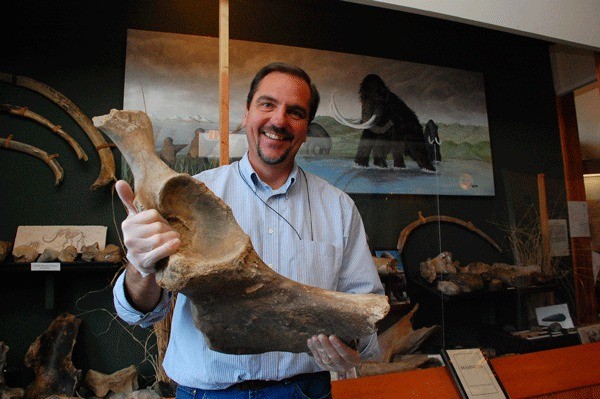After an absence of about 12,000 years, one of the world’s most famous but extinct herbivore species will make a reappearance on Whidbey Island this weekend.
At least in spirit that is.
This Saturday, Sept. 18, the Island County Historical Society Museum in Coupeville will host its seventh annual Mammoth Day. The event, which will teach you everything you ever want to know about the lumbering wooly giants, begins at 11 a.m. and runs until 4 p.m. The museum is located at 908 NW Alexander Street.
“If you’ve ever wondered what a wooly mammoth bone feels like, nows your chance,” said Rick Castellano, director of the museum.
Mammoth Day is a family function, with activities meant to appeal to all ages. Local paleontologists will be on hand to answer questions and teach techniques for identifying mammoth remains, and children can choose from a multitude of fun activities, from fossil digs in an outside sandbox to a scavenger hunt.
The whole idea behind the event, said Castellano, is to celebrate and remember some of Whidbey Island’s early inhabitants.
It’s still unclear just how or why mammoths dissapeared at the end of the last ice age, about 12,000 years ago – some believe it was the result of climate change, others that they were hunted to extinction – but they were definitely on the island and possibly in large numbers.
“There were quite a few of them because people are still finding remains,” he said.
Most are found on South Whidbey, although Castellano declined to say where exactly for fear of “starting a gold rush.” A toe bone here, a rib there; people find them regularly, he said. Perhaps no one has found more than Tina Jarman, a former South Whidbey resident living in Burlington.
“We’ve found over 2,000 bones in a 200 square-yard area,” said Jarman, of the island’s best known producing site.
She and the late Dale Conklin, both amateur paleontologists, worked the site for years. Many of the bones they unearthed had “green” breaks, which almost always occurrs while an animal is being butchered. That, and their discovery of stone tools, is strong evidence that humans were hunting wooly mammoths right here on Whidbey Island more than 12 millennia ago.
“It’s pretty cool,” Jarman said.
Castellano agreed. People here have an awful tendency to believe that history on Whidbey Island started with the arrival of white settlers. This event is a chance to remind them that that is not the case.
“There have been people and animals here much longer than we have,” Castellano said.



